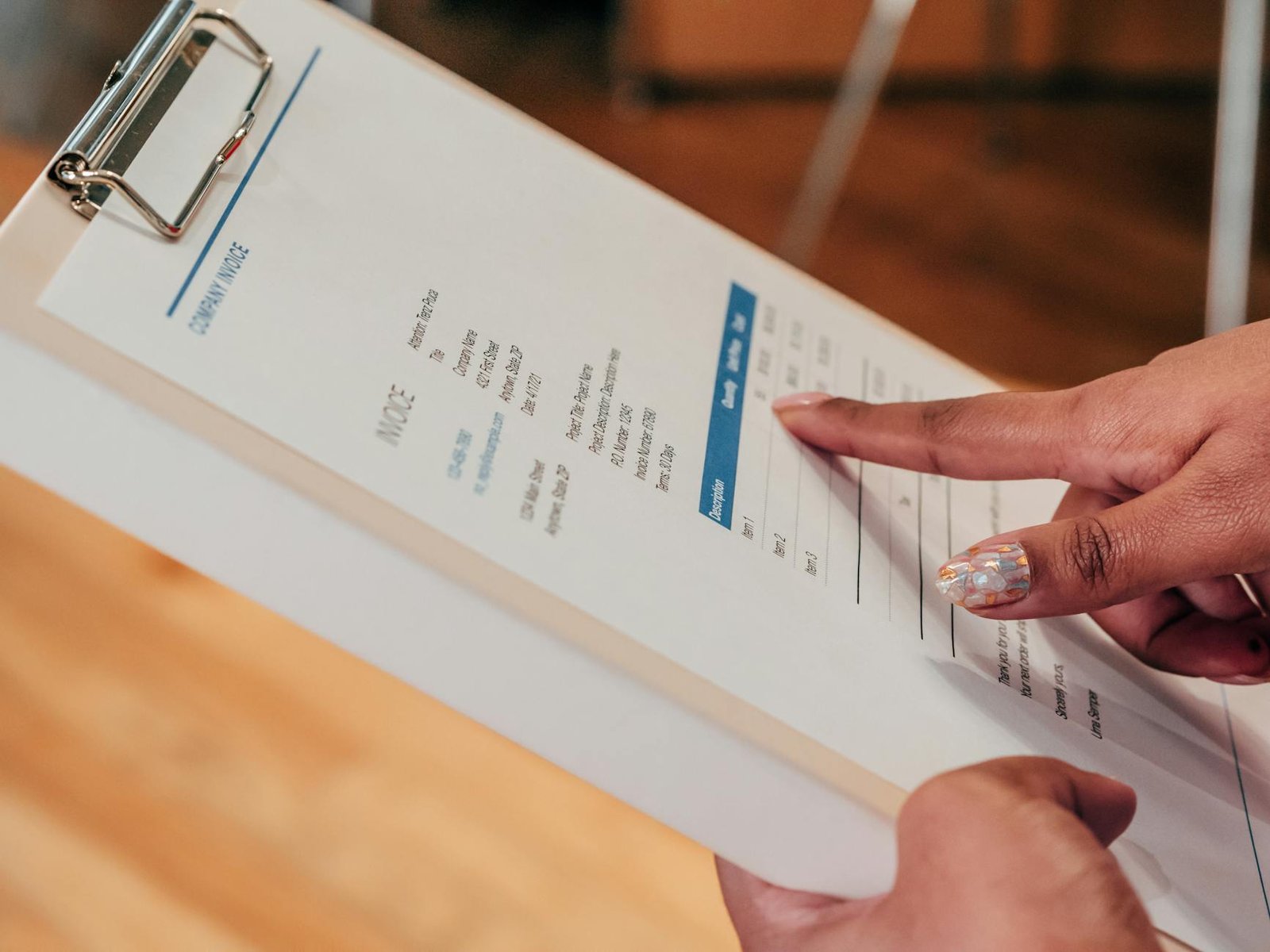Introduction to Construction Billing
Curious about how billing works in the construction industry?
You’re in the right place!
In this article, we’re going to unpack the complex world of construction billing. From the essential components of an invoice to various methods contractors use to bill, we’ve got you covered.
Did you know approximately $960 billion owed to contractors and suppliers remains unpaid for more than 30 days?
This highlights the importance of a well-structured and effective billing system.
Ready to get started?
Let’s dust off our boots and get into it.
Table of Contents
How to Properly Bill in Construction

Understanding the Basics of Construction Billing
Before exploring the nuances of construction billing, it’s essential to grasp the fundamentals. Construction billing involves recording, submitting, and managing payment claims for construction services and products.
This process ensures that all stakeholders are compensated fairly and on time.
The Components of a Construction Invoice
A comprehensive construction invoice includes several essential components to ensure accuracy and transparency:
- Client Information: Name, address, and contact details.
- Contractor Information: Business name, address, and contact details.
- Invoice Number: A unique number for tracking purposes.
- Date: Billing date and due date for payment.
- Scope of Work: Detailed description of services and materials provided.
- Cost Breakdown: Itemized list of costs, including labor, materials, and additional fees.
- Total Amount Due: The sum of all costs, including taxes.
Using Progress Billing
Progress billing is standard in construction projects due to their extended timelines. This method involves invoicing the client at various stages of the project.
Benefits of progress billing include:
- Improved cash flow.
- Reduced financial risk.
- Clearer tracking of project progress.
Creating a Billing Schedule
Establish a billing schedule to maintain consistency and ensure timely payments. Here’s a simple table to illustrate a typical billing schedule:
| Billing Phase | Amount Due | Due Date |
|---|---|---|
| Initial Deposit | $10,000 | Start Date |
| Milestone 1 | $20,000 | 4 weeks after start |
| Milestone 2 | $20,000 | 8 weeks after start |
| Final Payment | $15,000 | Project Completion |
Incorporating Retainage
Retainage is a portion of the payment withheld until project completion to ensure that contractors fulfill their obligations. Typically, 5-10% of the total contract value is retained.
This practice provides a financial incentive for maintaining project quality and adhering to deadlines.
Using Construction Billing Software
Investing in construction billing software can streamline the invoicing process and reduce errors. Notable features include:
- Template customization for invoices.
- Time and expense tracking.
- Automated reminders for overdue payments.
- Integration with accounting software.
Products like Procore offer robust solutions tailored for the construction industry.
Best Practices for Construction Billing
To optimize your billing process, consider these best practices:
- Maintain clear and consistent communication with clients.
- Ensure all invoices are detailed and accurate.
- Regularly review and update billing procedures.
- Track payments diligently to avoid overdue accounts.
Enhancing Construction Billing

Going Beyond Basics
In addition to standard elements of a construction invoice, you can elevate your recordkeeping for a more detailed view of your business operations. Here are a few additional details to include:
- Terms of Payment: Clarify the preferred method of payment, whether that’s credit card, check, or online payments.
- Invoice Notes: Provide any additional information necessary for the client to understand charges. These might include explanations for cost variations or reminders of contractual obligations.
- Late Payment Penalties: Detail potential consequences for late payments to encourage clients to resolve their dues promptly.
Regular Billing Updates
Instead of strictly following a pre-determined billing schedule, consider providing ad-hoc updates when there are significant changes to project costs or timeline. This can prevent misunderstandings and disputes with your clients.
Utilizing Construction Billing Software to Maximum Capacity
While the given uses for construction billing software already greatly streamline the billing process, utilizing these applications to their maximum capacity can yield even greater rewards. Additional, often overlooked, benefits of such software include:
- Analytics: Many software options provide reporting tools that can reveal trends in your finances, helping you identify areas for improvement in your business operations.
- Documentation Management: Keep all your project documents in one place to ensure easy access. Some software can even manage versions of documents.
- Integration of Tasks: Use the software suite not only for billing practices but also to manage project tasks and track progress efficiently.
Improving Client Relations through Construction Billing
Proactive construction billing can not only improve your business operationally but also relationally. To engage your clients in the billing process and foster better relationships, consider these strategies:
- Transparent Pricing Models: Clearly explain your pricing models to avoid any confusion and set the right expectations from the outset.
- Periodic Billing Meetings: Schedule regular meetings to discuss billings, answer queries, and provide updates. This simple practice can alleviate concerns and minimize potential disputes.
- Client Feedback: Encourage your clients to provide feedback on your billing process. Their input can be invaluable in refining your processes.
Sustainability Efforts and Construction Billing
Green construction practices have become a selling point for many contractors. Integrating these values into your billing processes can subtly reinforce your commitment to sustainability. For instance, opting for e-invoices over paper ones is not only more efficient but also environmentally friendly.
Digitized billing also facilitates audits and ensures tax compliance. Check out this guide by the EPA on environmental leadership for businesses.
Mastering Construction Billing: A Conclusion
Implementing best practices in construction billing is vital to running a successful construction business. It involves understanding the basic components of an invoice, creating a consistent billing schedule, and even incorporating practices such as retainage to ensure project quality.
Creating transparency and accuracy while billing promotes trust, reduces misunderstandings, and helps maintain a positive relationship with the clients. Utilizing construction billing software can streamline the invoicing process, reduce errors and offer valuable data for business insights.
Enhancing construction billing practices also allows for more efficient operations and a comprehensive understanding of business finances.
Different billing methods, each having unique advantages, can be used strategically to improve cash flow, manage risks, and deal with project unpredictability.
Lastly, integrating sustainability efforts into the billing process reflects corporate social responsibility, promotes efficiency, and facilitates regulatory compliance.
Frequently Asked Questions – FAQs
What are some best practices in construction billing?
Maintaining clear and consistent communication with clients, ensuring detailed and accurate invoices, and regularly reviewing and updating billing procedures are some of the best practices in construction billing.
What is retainage in construction billing?
Retainage is a portion of the payment withheld until project completion to ensure that contractors fulfill their obligations. Typically, 5-10% of the total contract value is retained.
How can a construction billing software help?
Construction billing software streamlines the invoicing process, reduces errors, integrates with accounting systems, and provides automated reminders for overdue payments. It also offers valuable insights through data analytics.
What are some different construction billing methods?
Some of the billing methods in construction include lump sum contracts, time and materials billing, cost plus contracts, unit pricing billing, milestone billing, mobilization billing, and retention or holdback billing.
How can one enhance construction billing?
Going beyond the basics of invoicing, making regular billing updates, fully utilizing construction software, improving client relations, and integrating sustainability efforts are some ways to enhance construction billing.






